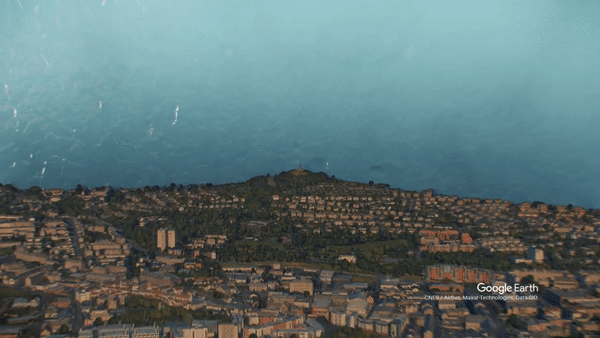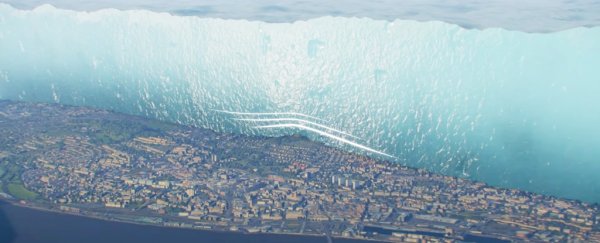A stunning new video shows the giant ice sheet that molded the Scottish landscape during the last ice age, and it looks like something out of Game of Thrones.
The film recreates how the 0.6-mile-thick (1 kilometer) glacier would have looked atop the modern-day city of Dundee. The glacier looms over the city like the Game of Thrones series' immense ice Wall towers over the stronghold Castle Black.
Kieran Duncan, a lecturer in communication design at the University of Dundee in Scotland, created the video with Max Van Wyk de Vries, a glaciologist at the University of Minnesota.
They included the 571-foot-tall (174 meters) Dundee Law hill, a local Dundee landmark about as tall as the Washington Monument (555 feet, or 169 m tall), to illustrate the glacier's size.
"Part of the film shows what a 1 km ice sheet would have looked like on top of the [Dundee] Law, and I remember my mind being blown when Max first told me about that," Duncan said in a statement.
"You hear numbers like that, but it's only when you see what that would have looked like in relation to something like the Law, which towers above the city, that you really start to conceive of just how massive this glacier was."
Related: In photos: The vanishing glaciers of Europe's Alps
Glaciers covered Dundee and most of the British Isles 20,000 years ago, toward the end of the last ice age (about 2.6 million to 11,700 years ago). As Earth warmed up again about 15,000 years ago, the glaciers retreated and carved out features in the landscape, such as the Dundee Law, according to the statement.
Van Wyk de Vries decided to find out more about Scotland's past when he visited his girlfriend in Dundee last March and was unable to travel back home to the U.S. due to a COVID-19 lockdown. The couple began exploring Dundee and the surrounding area for exercise.
 (Kieran J. Duncan)
(Kieran J. Duncan)
Above: An extract from the video comparing the height of the glacier to modern-day Dundee.
"That got me thinking about these lovely landscapes and how they were formed by the flowing ice," Van Wyk de Vries said.
To find details about the glacier, he scanned scientific papers, local data, and ice models. He also looked at satellite images of modern-day glaciers in Greenland.
Van Wyk de Vries then received public engagement funding from the British Society for Geomorphology and teamed up with Duncan to visualize his work.
The 3-minute film uses animated visualization techniques, filmed footage, and time-lapse video to bring the ancient glacier to life over Dundee.
It was released on YouTube on Sept. 6 and is a part of the "Time and Tide" exhibition at The McManus: Dundee's Art Gallery and Museum until Oct. 3.
Related content:
Dramatic images capture rapid slide of Antarctic glacier
Mammoth resurrection: 11 hurdles to bringing back an ice age beast
10 stunning natural wonders of the world you need to visit
This article was originally published by Live Science. Read the original article here.
